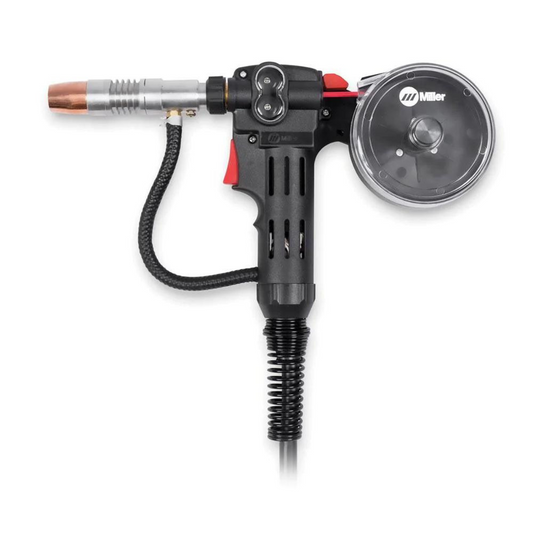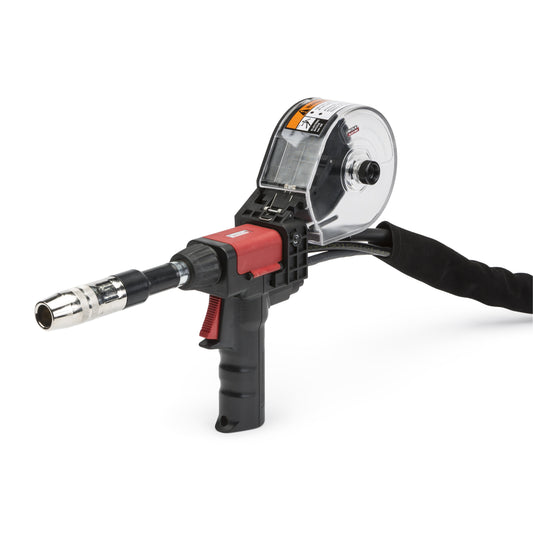The one challenge you’ll face when trying to weld aluminum is that a MIG welder may have too much power for thinner sheets of aluminum. A good rule of thumb is that you’ll weld aluminum that is 14 gauge and higher. Thinner aluminum will need a pulse setting for a MIG welder. Otherwise, use a TIG welder.
Torch Position for MIG Welding Aluminum
A 10-15 degree torch angle will be ideal for MIG welding aluminum. You’ll also want to push your torch while welding rather than pulling it. A straight, steady torch movement is ideal for MIG welding aluminum so that the impurities stay outside of the weld puddle. Some welders suggest inching forward and then pausing before inching forward again so that your final weld has a neat, uniform appearance.
Use a Spool Gun to MIG Weld Aluminum
A spool gun will save you a ton of time and aggravation since aluminum wire is too soft to effectively feed through a MIG machine. It will keep getting jammed, and you’ll have a frustrating time at it. Spool guns attach to your MIG gun and then feed the wire right into the torch.
Use Spray Transfer for MIG Welding Aluminum
You’ll use a longer electrode stick out for MIG welding aluminum and the melted aluminum will be sprayed into the weld puddle. If you hear the crackle you usually hear when you’re welding steel, you’re doing something wrong. Your wire feed speed is most likely too fast. Though it’s usually ideal to start a little on the fast end and then adjust the speed as you go, having too fast a wire speed will add too much metal and possibly damage your metal work piece.
Clean the Aluminum Before MIG Welding
Solvents such as acetone are usually ideal for cleaning metal, but if you have a lot of mill scale, you may want to grind down the metal first before prepping the weld.
Use Straight Argon for Aluminum MIG Welding
Though some gas mixtures can be used as a shielding gas for MIG welding aluminum, the majority of situations will call for a simple tank of argon. You’ll need to weld with argon using reverse polarity or DCEP.



